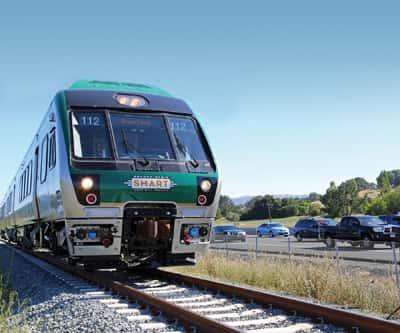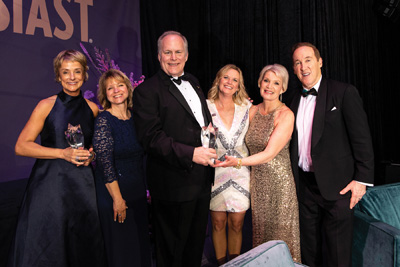The public assistance programs in America can be likened to a lake at the bottom of a waterfall. Into this lake falls the unfortunate, under-educated and ill prepared.
Far above the waterfall lies a beautiful meadow with a meandering stream. Youth looks at the stream and jumps in to frolic and be refreshed, blinded by love.
Youth does not notice the tributaries of unemployment rates, escalating living costs and pregnancy emptying into the stream, transforming it into a river. Youth is so busy looking at each other that it slips on the rocks and is dumped into the river. Youth has become a couple, caught in the current, headed for the waterfall.
The couple lives in a small apartment above the husband’s employer. The employer goes bankrupt, and the couple loses their home. Because of poor choices they have made in the past, they have bad credit and have difficulty finding another apartment. The baby is due to arrive in two months. They finally find an illegal dwelling with a small kitchen, a tiny bathroom and one other room approximately 12 ft. by 12 ft. with a dirt floor. This will serve as a living room, dining room and bedroom for themselves and their child. They pour concrete to cover the dirt floor, throw down a carpet and move in. They use a port-a-potty provided by the landlord because the sewer system is shot and the toilet empties to the ground outside. They put a plastic bag on the ceiling to cover a hole in the roof, angling the bag so that the rain doesn’t drip onto the bed. They only plug in two electrical items at a time, or the fuse will blow. The river has them firmly in its grasp.
The baby arrives and, for three months, the wife is on maternity leave from her assembly-line job, her income cut by half. They eat what they can; tortillas with melted cheese is a staple because diapers are more important.
They wish they had pursued more than a high school education but wouldn’t trade their daughter for the world. They work as hard as they know how, struggling against the current and hidden undertows of life.
The wife returns to work on the night shift because childcare is out of the question on their income. She sleeps when she can while caring for her baby. For a short time, they appear to have their footing and are heading toward the shore. One morning, when the wife gets home, she doesn’t go to bed because the baby needs her immunizations. On the way home from the doctor’s office, too tired to be driving in the first place, the wife falls asleep at the wheel. She leaves the road and plows into a parked cement truck. Thank God they had pinched pennies and bought a good car seat. The wife has a badly broken arm, requiring surgery, but the baby escapes without a scratch. The wife is now on disability. Unable to return to work soon enough, she is fired. This is a major blow. Jobs don’t come easy to this young mother whose existing hearing impairment drastically shrinks the unskilled labor pool she will need to enter to find work.
Meanwhile, the husband is trying hard but is unable to get his footing in this raging river of life. His job as a golf caddie is sporadic, and winter is on the way. He spies a log nearby; and although it is headed downstream, he fights his way to it, his family in tow. He hopes it will keep them afloat long enough to let them gain the strength needed to make it to shore. As he reaches the log, he sees a sign on it. The sign tells him that in order to use the log he must stop trying to fight the current. He must give up, quit his job and allow the log to carry his family and himself over the falls. This log represents the beginning of the public assistance philosophy. Wisely, he moves away to continue the struggle alone.
This series of events is not fabricated. This is the real world. I know because this is the life of my daughter and her family—right here in Sonoma County. Our public assistance programs are most definitely broken. The way that public assistance is currently structured and delivered is, in fact, not how I believe the general public would choose to assist those in need. A handout is never the appropriate response when a hand-up is what is requested.
In my youth, a high school education was enough to provide a middle-class income for the majority. This is no longer the case. We are seeing more and more often that those who leave the school system, following high school, find themselves swept away and in need of a hand to learn how to navigate the river of life.
Our current public assistance programs consist of making and distributing life preservers to those who have tumbled over the falls. This current system will eventually wear us down to the point where many will faint and fall into the lake themselves until there is no one left on shore to make the preservers.
A footbridge of education, strategically spanning the river, could rescue countless numbers from the watery pit that awaits them. There should be very few who ever make it to the falls. A hand lowered toward the river would be readily grasped, allowing those in the torrent to climb onto the bridge. The swaying fashion of the footbridge would quickly dump back the lazy, but those who truly want the goal would hold fast. They would struggle along the planks and would reach the bridge’s edge where the productive workforce resides on the banks of the river.
Abject poverty need not be the prerequisite used to choose who deserves assistance. A more realistic scale, using desire and determination, should be instituted. Once qualification is established, an education plan can be drawn up and initiated. This plan should encompass whatever is necessary for the students to achieve their goal. This might include childcare, housing, transportation, trade school enrollment or college tuition. Each plan should be set up on an individualized basis without restriction as to time or monies. Carefully laid out stepping stones, with continual evaluation, would assure that solid footing is being achieved. The only restriction put on the plan should be that the student must follow through to completion. There should be a specified number of deviations laid out during development of the plan to allow for the unforeseen circumstances that life brings to all.
I believe that public monies spent in education and training for those still in the river would be far less than the alternative of continuing to throw life preservers to those who refuse to hold on and paddle for shore. There are many programs currently in place but only for those who have already arrived in the lake of welfare. I am suggesting that it would cost less if these systems were opened to those who still have some fight left in them. I believe the failure rate would be greatly reduced and more people could be rescued from the river, never having to experience the tumble over the falls.
Because I also believe that something for nothing is usually worth nothing, there must be a payback program incorporated into every plan. This should be accomplished in the form of a 10% garnishment of earnings being returned to the system. It would make sense for one year of training to trigger one year of garnishment.
The perfect public assistance program should be open to all. It ought to provide many different levels of assistance tailored to the needs of the individual. A specific worker should be assigned to follow each person accepted into the program. Assistance might be as simple as providing direction to services already available in the community or as complex as a complete two-to-four year plan.
There follows a picture I would like to leave with you. Visualize public assistance standing on the bridge. It reaches down its hand and helps a struggling soul onto its span. It hands a blanket to the shivering individual, puts its arm around the person’s shoulder and together they begin to walk toward the end of the bridge. At first they are hunched over, feet spread wide to maintain balance. As they progress, notice that their footsteps become more confident. Halfway along the bridge they stop. They shake hands, and a strengthened individual turns away, continuing on until he walks off the bridge. He turns, smiles and waves his hand in thanks. Assistance returns the gesture as it turns back, ready to reach down once again.
Janie Bockhahn is employed by Kaiser, attends SRJC and has resided in Sonoma County since 1997. Her concern regarding how such a prosperous county can so easily lose so many young adults to poverty has encouraged her to speak out. "



